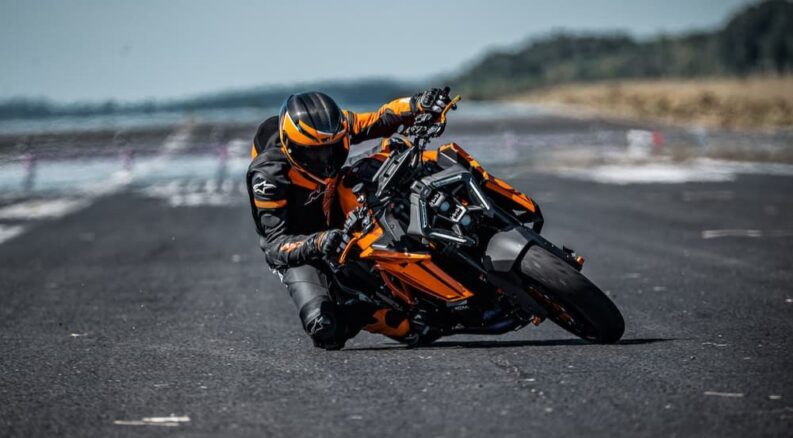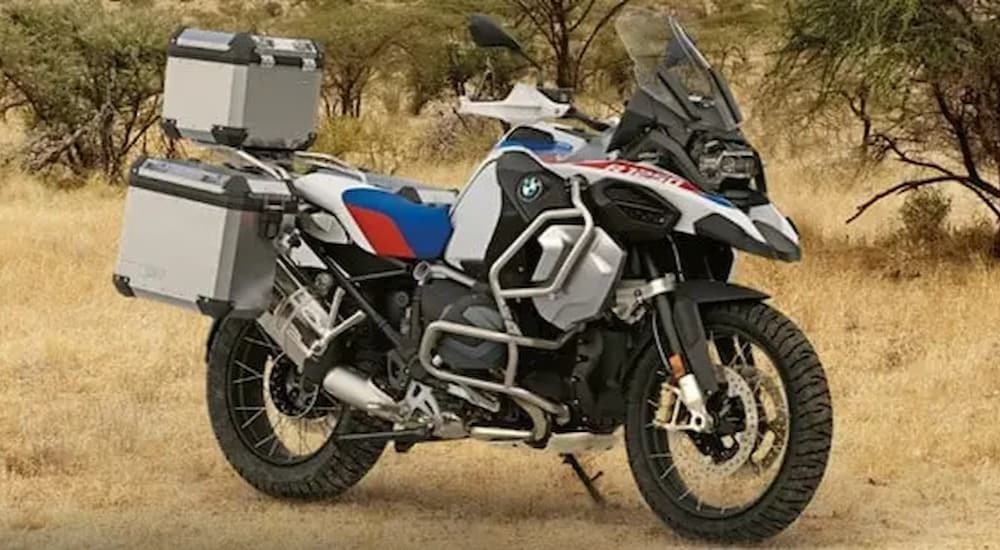For over 20 years, the sport bike market has been flagging. According to the most recent IIHS data, the percentage of registered US motorcycles classified as sport bikes fell from 7.1% in 2002 to as low as 4.9% in 2020. Despite a recent mini-surge, it still only sits at 5.1% as of 2023, the latest year reported. The drop-off for supersport bikes has been even more precipitous. They peaked at 10.2% in 2008 but have since fallen to 5.7%. This comes as other segments like touring, sport touring, and dual-purpose motorcycles are soaring in relative popularity.
To be fair, the total number of registered sport bikes increased by 44.5% in those 21 years. But when you consider that the total number of motorcycles was up 102.6%, sport bikes aren’t even close to keeping pace. As for supersport bikes, the raw numbers are down 37.5% from their peak. What is behind this ongoing trend? I decided to investigate why people have moved away from sport bikes and what the future may hold for these steel horses.
The Good of Sport Bikes
Before going any further, let me be clear. For the right rider, there are things to love about getting on a sport bike and turning loose. For starters, they almost always offer the best speed and handling. Manufacturers equip them with powerful engines, make them as light as possible, add aerodynamic fairings, and give them excellent chassis designs and braking systems to run amazingly on any paved surface. In particular, supersport bikes are essentially road-legal versions of the bikes used on professional circuits like the FIM Superbike World Championship and MotoAmerica AMA Superbike Series. If you’re a track day enthusiast, a sport bike is the ride for you.
There is also no mistaking the style and attitude of a sport bike. Just looking at one makes my heart beat faster. When a rider is at a track day, zipping down the highway, or careening around twisty byways, people will almost certainly look twice. For someone who has the soul of a daredevil or who likes making a brash statement, a sport bike will almost always fit the bill.
The Bad of Sport Bikes
As it turns out, many riders are looking for more than raw speed and aggressive style from their two wheels. Here are some of the theories I’ve found about why the market for sport bikes has dipped so drastically.
They’re Not Good Daily Riders
When motorcycles prioritize performance, comfort and functionality are a distant second and third. Among other characteristics, sport bikes typically have high foot pegs and a seat that leans the rider far forward. This design lowers the center of gravity and improves aerodynamics, which is great for going fast. However, while most riders are fine with this arrangement for short distances, few can tolerate it for long rides. Sport bikes also tend to be smaller than other motorcycles, so tall riders may not even fit. The fuel mileage is poor, too, and it is a trade-off for all that power.
By comparison, bikes like standards, cruisers, and touring motorcycles have more upright riding positions that remain comfortable for hours. These bikes also have more efficient engines, and touring bikes add useful features like large fuel tanks, cruise control, premium audio systems, and saddlebags. Good luck finding any of those on a sport bike. The US share of registered touring motorcycles went from 14.4% to 23.5% from 2002 to 2023, showing it’s a far preferred setup.
They Have a Steep Learning Curve
A sport bike’s high speeds, quick acceleration, and pavement-hugging suspension are great once you get the hang of it. Unfortunately, the journey to that point can be tough. Since they are so powerful and the controls are so responsive, sport bikes are unforgiving to the uninitiated rider just learning how to twist a throttle or lean into corners. A lot of bumps, scrapes, and discouragement can result. (There’s also a perception that sport bikes are more dangerous regardless of the rider, but I had difficulty finding data to corroborate this.)
Someone new to motorcycles is usually better off with a non-sport model. The lower power-to-weight ratio and less sensitive controls make them much easier to command for new and casual riders. Although touring bikes and choppers often also have big engines, the higher weight offsets this, so riders don’t constantly feel like they’re on the ragged edge.
You Can’t Go Off-Road
Sport bikes are a dream to drive on smooth pavement, but no sensible rider would ever take them on dirt or pothole-filled roads. That isn’t a concern for some riders, such as those in big, well-kept cities or with tracks nearby. However, other riders want or need a bike that can handle some off-road action, or at least the dirt-covered roads and rough pavement, which are still common in rural areas.
Conversely, adventure motorcycles, also known as dual-sports, dual-purpose, or enduros, are designed to be adept at pavement and dirt alike, giving thrill-seekers more options for where they ride. Thanks to this versatility, dual-purpose motorcycles have gone from 4.8 to 8.4% of the US market share. Of course, even a typical cruiser or touring bike can handle the occasional bump without careening out of control. The sensitive, twitchy handling that makes a sport bike so responsive on pavement makes it difficult to control once you leave it.
They’re Expensive
Owning a good sport bike isn’t for the faint of heart or the faint of budget. Although the cost of low-end sport motorcycles isn’t that much different than cruisers or standards, high-end bikes can have eye-popping price tags. The BMW M 1000 RR is almost $33,000, and special editions from brands like Arch and Ducati can reach six figures. The premium parts used to make them mean maintenance and repairs are more expensive. Insurance companies are also known to charge more for sport bike coverage because of their real or imagined dangerous reputation. This can be a deterrent when deciding between a sport bike and another style.
Are Riders Aging Out of Sports Bikes?
Here’s something else to consider. Like exotic cars, sport bikes have historically appealed to younger riders who love an adrenaline rush. But the motorcycle population is aging fast. According to the Motorcycle Industry Council, the average motorcycle rider went from 27 years old in 1980 to 50 years old in 2018. That’s nearly double the age in just two generations. Furthermore, the slice of women motorcycle owners has increased from 6 to 19%, which undeniably impacts the demographic (and could be an article by itself). Even without the other factors, it’s possible that sport bikes simply don’t appeal to the general riding culture like they used to.
What’s Next for Sport Bikes
In my opinion, there will always be at least some sort of market for sport and supersport bikes, if only to fuel the competition addicts and hedonists who want a taste of what they watch the pros do. However, the motorcycle industry is at an interesting crossroads for sport bikes. This may correlate to the need to reach more Millennials and Zoomers before the whole market runs into trouble. Unlike other parts of the world, most Americans don’t see motorcycles as everyday transportation, and many younger would-be riders can’t afford the extra expense. Remember that 102.6% growth in registered motorcycles I mentioned earlier? Most of that growth happened from 2002 to 2009. From 2009 to 2023, the overall market only grew 9.6%, meaning a crest could be near.
The question is how manufacturers will respond and whether sport bikes are part of the equation. Do they circle back to sport bikes and emphasize the excitement to potential new riders despite the drawbacks? Do they throw their support behind options like the sport touring motorcycle and naked sport, less-intense versions of sport bikes which have greatly increased their market share in the 21st century? Or do they go in a different direction, like doubling down on adventure bikes, touring bikes, and scooters? The answer may determine whether sport bikes can turn things around and regain their prominence in the US motorcycle scene or whether they become a niche like choppers.






